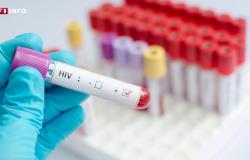A gas from the ground that seeps into buildings
Naturally present in the ground, radon can enter buildings through cracks in foundations or basements, pipe passages, seals, porous materials, etc. and accumulate in closed spaces ( basements, crawl spaces, cellars, living rooms, etc.). Radon concentrations vary greatly from one building to another, depending on the tightness of the ground, the ventilation of the building, the proximity of the emission source, etc. The concentration of radon in the air of a home depends on the characteristics of the soil but also of the building and its ventilation. It also varies according to the habits of its occupants in terms of ventilation and heating.
Certain areas more at risk in Burgundy-Franche-Comté
Radon is particularly present in granitic, volcanic and uranium-bearing regions (where the subsoil contains uranium). The highest concentrations of radon are observed in the Massif Central, Limousin, Corsica, Brittany, the Vosges massif and even in Burgundy-Franche-Comté. Based on knowledge of the geology of France, the IRSN (Institute of Radioprotection and Nuclear Safety) has established a map of the radon potential of soils. It makes it possible to determine the municipalities in which the presence of radon at high concentrations in buildings is most likely. To find out the radon potential of your municipality, go to https://www.irsn.fr/savoir-comprendre
The effects of radon on health
Radon is present everywhere: in the air, soil, water, and thus constitutes the main source of exposure to natural radioactivity, although with strong geographical disparities. However, the health risk arises mainly from its presence in the air. Radon and some of its descendants, themselves radioactive, enter the lungs with the air we breathe. Once inhaled, they are deposited along the respiratory tract and cause their irradiation, which can lead, in the long term, to the development of lung cancer. In France, radon is the second cause of lung cancer, after tobacco and ahead of asbestos: of the 30,000 deaths observed each year, 3,000 are attributable to it (i.e. 10% of lung cancer deaths attributable to radon ).
Good gestures:
On a daily basis, to maintain good indoor air quality against radon:
I know the radon potential of my municipality, thanks to the IRSN map / I air my home daily / I check the proper functioning of the ventilation system and maintain it regularly and do not obstruct not the ventilation grilles.
I took a measurement at home and if the result is high (> 300 Bq/m3), I reinforce the actions:
I increase the renewal of my indoor air (reinforcement of natural ventilation, or even implementation of suitable mechanical ventilation, rectification of malfunctions, etc.) / I limit the entry of radon by reinforcing the seal between the floor and my home (sealing cracks and pipe passages, sealing interior doors and hatches allowing access to the basement, cellar, etc.) / I ventilate my crawl space and/or my basement / I check the effectiveness of the work by re-measuring the radon in the occupied living rooms. Implementing actions to reduce exposure to radon improves the indoor air quality of your home more generally and can also be an opportunity to improve the energy performance of your home.





